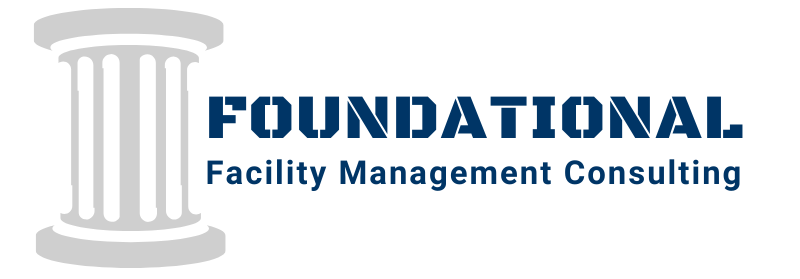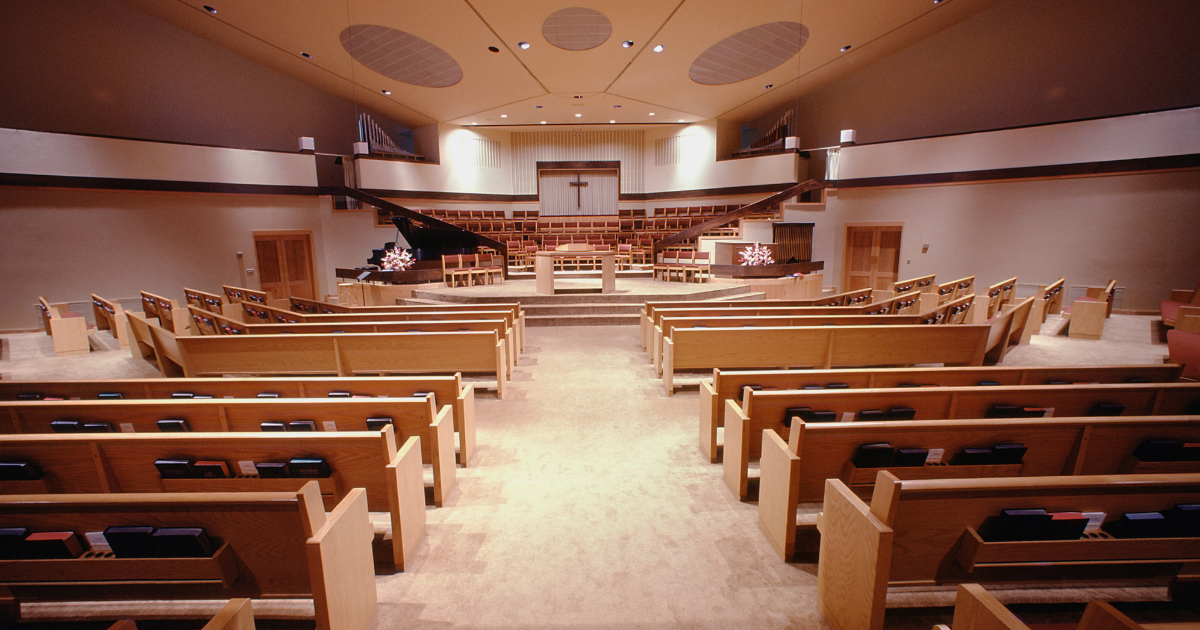Good facility management is crucial to the financial well being and attractiveness of a church. The maintenance of your buildings and grounds directly impacts the experience for those interacting with your church. However, many churches get caught in the cycle of reactive maintenance—working on emergency maintenance and repairs instead of planning ahead.
Years ago, I became a facility manager at a church that had been deferring maintenance because they had planned to build a new building. However, plans fell through, and they were left with several years of maintenance issues coming to a head.
For example, the HVAC filters were so rotted that they had fallen into the unit, leaving nothing to filter dirty air entering the air handler. The exterior units hadn’t been cleaned, and some of them had broken belts. The poorly running HVAC system was costing the church more in utilities costs, and worst of all, it was unable to keep a consistent temperature in the building during services leading to complaints and an uncomfortable congregation.
The reactive maintenance required to get the system back up to standard operating cost more than if they had implemented a preventive maintenance program. Some units even needed to be completely replaced due to the lack of maintenance. While the details may be slightly different, situations like this are playing out at churches across the country.
Moving from reactive to preventive maintenance in your church can significantly enhance the stewardship of your facilities and budget, ensuring a safer, more welcoming environment.
Here’s how you can make this shift.
Understanding Reactive vs. Preventive Maintenance
Reactive Maintenance
Reactive maintenance, often known as “firefighting,” involves addressing problems as they occur. While it can seem efficient in the short term, it often leads to higher costs, increased downtime, and more significant disruptions.
Here are a few examples of what reactive maintenance looks like in a church facility:
- Neglecting to maintain the HVAC system properly and then needing to make emergency repairs when the heat goes out in the middle of a frigid winter.
- Ignoring the cracked sidewalk until a member of the congregation trips and falls on it.
- Failing to check the roof’s condition until there are obvious leaks and water damage to the ceiling.
Reactive maintenance can happen for many reasons. Sometimes, it’s an issue of not knowing having a schedule to stay on top of preventive maintenance or not knowing the right ways to prioritize the facility budget, or it could be that another situation in the church has led to deferred maintenance over the years, resulting in a pile-up of maintenance emergencies all at once.
Preventive Maintenance
Preventive maintenance, on the other hand, involves regular inspections, planned maintenance tasks, and long-term planning to prevent issues before they arise. This approach reduces unexpected breakdowns, extends the lifespan of assets, and helps manage budgets more effectively.
Instead of waiting for an emergency maintenance issue to surface, preventive maintenance means knowing the current condition of your building assets and conducting regular assessments and maintenance to keep things running smoothly.
Benefits of Preventive Maintenance for Your Church
Making the move to preventive maintenance provides a range of benefits that go beyond just fixing problems before they arise. The following are some of the results you may experience as you move away from reactive maintenance.
- Cost Savings: Preventive maintenance can reduce emergency repair costs, extend the lifespan of equipment, and improve energy efficiency.
- Safety and Comfort: Regular maintenance helps ensure your church facilities are safe and comfortable for congregants and staff.
- Enhanced Stewardship: Demonstrating a commitment to maintaining church facilities reflects responsible stewardship of resources.
- Reduced Stress: Preventive maintenance reduces the likelihood of unexpected problems, easing the workload on your facility managers and volunteers.
- Budget Planning: A proper preventive maintenance program includes knowing the expected lifecycle of your building assets and allows you to monitor maintenance on each asset, therefore allowing you to plan for the replacement of each asset.
- Welcoming Environment: Proper preventive maintenance helps create a welcoming and comfortable environment, encouraging new people to join and keep coming back. When people are too hot, too cold, or feel a building is not well maintained, they are less likely to return. Ensuring everyone in attendance or using the building feels safe and secure is also a key aspect of facility management for churches.
By embracing preventive maintenance, your church can not only preserve its facilities but also create a more inviting and stable environment for your congregation to thrive and focus on its mission.
Steps to Implement Preventive Maintenance in Your Church
If you’ve been in the reactive maintenance cycle for a long time, it may feel overwhelming to figure out how to get out of it. But the simple steps below can move you in the right direction.
1. Inventory Your Building Assets and Conduct a Facility Condition Assessment
Begin by assessing the current condition of your church’s facilities. Identify all assets, their current state, and any immediate repair needs. This assessment provides a baseline for creating a maintenance plan.
A member of your facility team can complete the inventory of assets and the facility conditional assessment, or you can hire a facility management consultant to do it for you.
2. Develop a Preventive Maintenance Schedule
Create a schedule for regular inspections and maintenance tasks. Include routine activities like HVAC inspections, roof checks, building envelope inspection, plumbing maintenance, and electrical system evaluations. Ensure that all critical systems are covered.
3. Train Your Staff and Volunteers
Ensure that all staff and volunteers involved in facility maintenance are well-trained. Provide them with the necessary tools and knowledge to perform their tasks effectively. Regular training sessions can help keep everyone updated on best practices.
4. Implement a Maintenance Management System
Use a computerized maintenance management system (CMMS) to track maintenance activities, schedule tasks, and manage work orders. A CMMS can help streamline processes and ensure nothing is overlooked.
It’s important to add the CMMS in the right order. Many churches struggling with reactive maintenance begin using a CMMS, thinking it will help solve their problems. However, you need a customized plan in place before using the CMMS. While digital tools are helpful, they’re only as helpful as the plan they’re being used to follow.
5. Budget for Maintenance
Allocate a portion of your budget specifically for maintenance activities. Preventive maintenance requires investment, but it pays off in the long run by preventing costly emergency repairs and by providing a welcoming atmosphere for your congregation. The longer you follow a customized facility management plan, the more accurate your facility budget forecasting can become.
6. Engage Your Congregation
Involve your congregation in the maintenance process. Encourage members to report issues promptly and participate in volunteer maintenance days. A sense of shared responsibility can strengthen the community and improve facility upkeep.
When working with volunteers, find the areas that they’re passionate about and allow them to feel a sense of ownership in helping with that area. For example, a retired handyman may enjoy regularly walking through the building to assess the condition of the assets, while a different member may prefer to focus on the safety of the parking lot. Help each volunteer find an area where they can contribute and shine.
7. Monitor and Adjust
Regularly review your maintenance activities and their outcomes. Adjust your preventive maintenance schedule as needed based on feedback and observed issues. Continuous improvement is key to effective facility management for churches.
Boost Facility Stewardship at Your Church
Shifting from reactive to preventive maintenance is essential for effective facility management for churches. By taking a preventive approach, you can ensure the safety, comfort, and longevity of your church facilities, ultimately supporting the mission and vision of your congregation. Start by conducting an inventory of your building assets and facility condition assessment, developing a preventive maintenance schedule, and engaging your community. With these steps, you can create a well-maintained environment that enhances the worship experience and demonstrates responsible stewardship of your church’s resources.
If you’re ready to move from reactive maintenance to a preventive Facility Maintenance Plan customized for your church, schedule a free consultation call with Foundational Facility Management Consulting. We’ll help you explore your options for training, assessments, and comprehensive maintenance planning.



